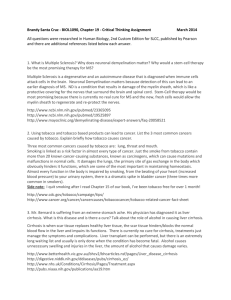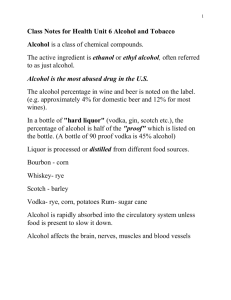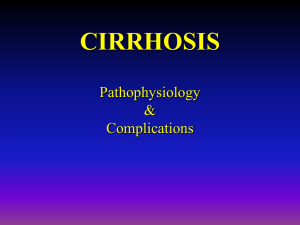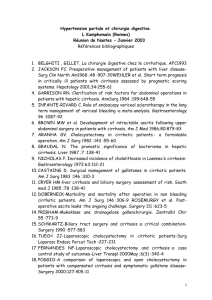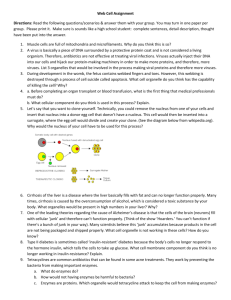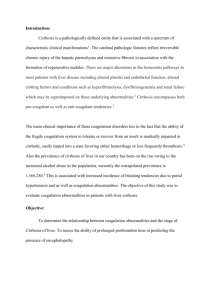Press release - MetaGenoPoliS
advertisement
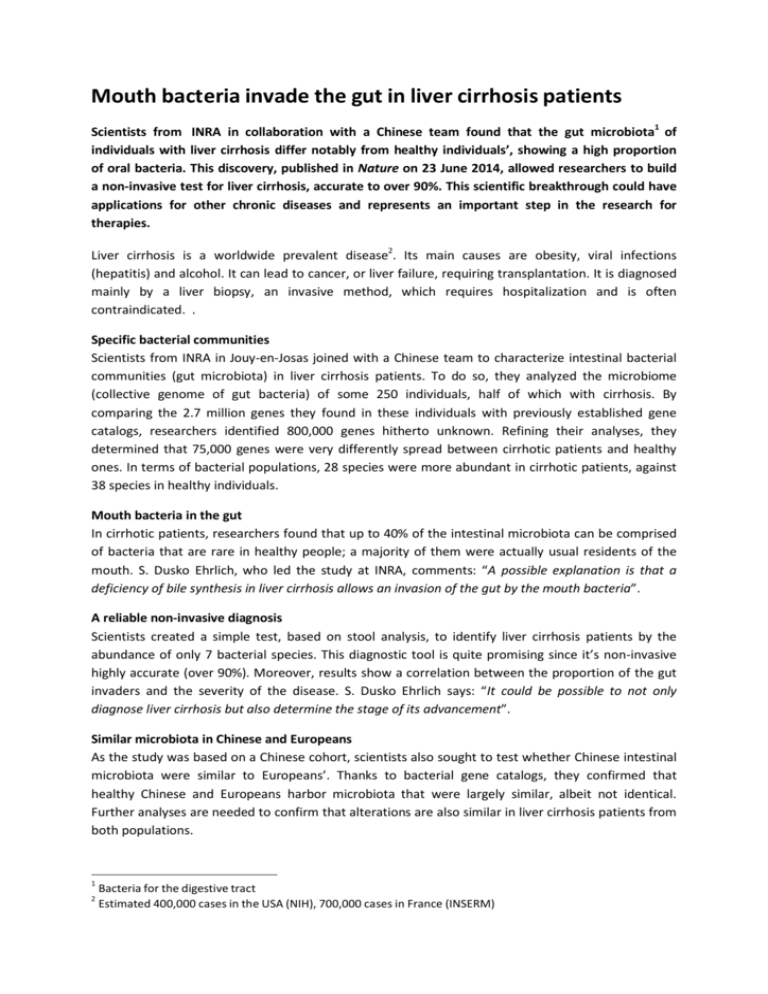
Mouth bacteria invade the gut in liver cirrhosis patients Scientists from INRA in collaboration with a Chinese team found that the gut microbiota1 of individuals with liver cirrhosis differ notably from healthy individuals’, showing a high proportion of oral bacteria. This discovery, published in Nature on 23 June 2014, allowed researchers to build a non-invasive test for liver cirrhosis, accurate to over 90%. This scientific breakthrough could have applications for other chronic diseases and represents an important step in the research for therapies. Liver cirrhosis is a worldwide prevalent disease2. Its main causes are obesity, viral infections (hepatitis) and alcohol. It can lead to cancer, or liver failure, requiring transplantation. It is diagnosed mainly by a liver biopsy, an invasive method, which requires hospitalization and is often contraindicated. . Specific bacterial communities Scientists from INRA in Jouy-en-Josas joined with a Chinese team to characterize intestinal bacterial communities (gut microbiota) in liver cirrhosis patients. To do so, they analyzed the microbiome (collective genome of gut bacteria) of some 250 individuals, half of which with cirrhosis. By comparing the 2.7 million genes they found in these individuals with previously established gene catalogs, researchers identified 800,000 genes hitherto unknown. Refining their analyses, they determined that 75,000 genes were very differently spread between cirrhotic patients and healthy ones. In terms of bacterial populations, 28 species were more abundant in cirrhotic patients, against 38 species in healthy individuals. Mouth bacteria in the gut In cirrhotic patients, researchers found that up to 40% of the intestinal microbiota can be comprised of bacteria that are rare in healthy people; a majority of them were actually usual residents of the mouth. S. Dusko Ehrlich, who led the study at INRA, comments: “A possible explanation is that a deficiency of bile synthesis in liver cirrhosis allows an invasion of the gut by the mouth bacteria”. A reliable non-invasive diagnosis Scientists created a simple test, based on stool analysis, to identify liver cirrhosis patients by the abundance of only 7 bacterial species. This diagnostic tool is quite promising since it’s non-invasive highly accurate (over 90%). Moreover, results show a correlation between the proportion of the gut invaders and the severity of the disease. S. Dusko Ehrlich says: “It could be possible to not only diagnose liver cirrhosis but also determine the stage of its advancement”. Similar microbiota in Chinese and Europeans As the study was based on a Chinese cohort, scientists also sought to test whether Chinese intestinal microbiota were similar to Europeans’. Thanks to bacterial gene catalogs, they confirmed that healthy Chinese and Europeans harbor microbiota that were largely similar, albeit not identical. Further analyses are needed to confirm that alterations are also similar in liver cirrhosis patients from both populations. 1 2 Bacteria for the digestive tract Estimated 400,000 cases in the USA (NIH), 700,000 cases in France (INSERM) Future studies will be needed to understand the role of the bacteria invading the gut of patients in liver cirrhosis. Preliminary observations indicate that certain bacteria overproduce molecules that are implicated in hepatic encephalopathy, a common complication of liver cirrhosis. A therapeutic strategy would be to inhibit these bacteria; another could target the malfunction of the bile in order to prevent the migration from the mouth to the gut. The novel findings on gut bacteria changes in liver cirrhosis could provide useful leads for other chronic diseases. Oral bacteria have already been observed to be more abundant in patients with colorectal cancer or with Crohn’s disease than in healthy individuals. Controlling and fighting this invasion of the gut from the mouth could prove helpful in treating these serious diseases. Reference Nan Qin, Fengling Yang, Ang Li, Edi Prifti, Yanfei Chen, Li Shao, Jing Guo, Emmanuelle Le Chatelier, Jian Yao, Lingjiao Wu, Jiawei Zhou, Shujun Ni, Lin Liu, Nicolas Pons, Jean Michel Batto, Sean P. Kennedy, Pierre Leonard, Chunhui Yuan, Wenchao Ding, Yuanting Chen, Xinjun Hu, Beiwen Zheng, Guirong Qian, Wei Xu, S. Dusko Ehrlich, Shusen Zheng, Lanjuan Li. Human gut microbiome alterations in liver cirrhosis. Nature, 23 July 2014. DOI : 10.1038/nature13568 Scientific Contact S. Dusko Ehrlich +33 1 34 65 25 10 - Dusko.Ehrlich@jouy.inra.fr MetaGenoPolis Scientific Division Microbiology and the food chain INRA Center of Jouy-en-Josas
